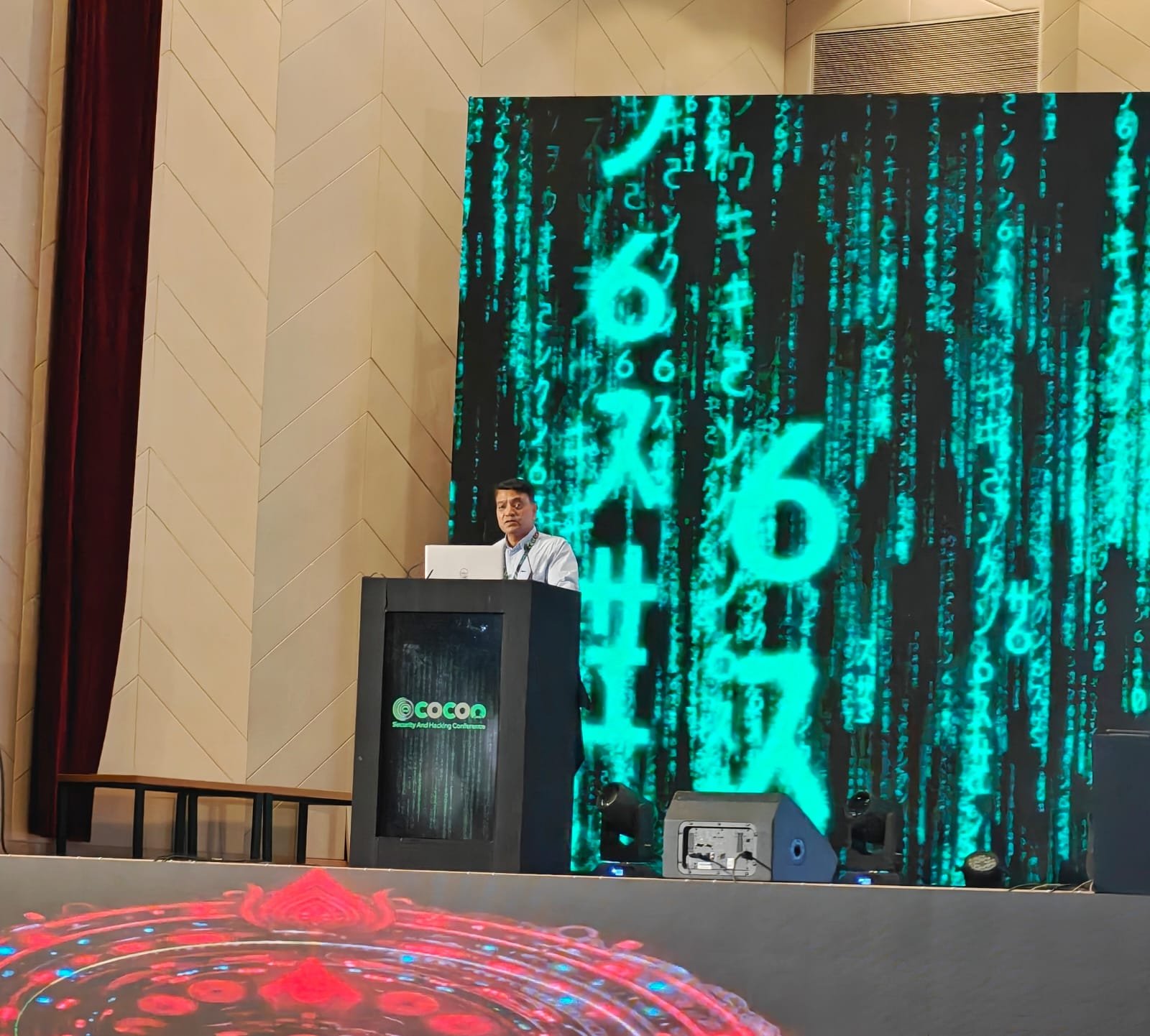Kochi, Kerala: At c0c0n 2025, one of India’s oldest cybersecurity conferences, Rajesh Kumar, CEO of the Indian Cyber Crime Coordination Centre (I4C) under the Ministry of Home Affairs, detailed India’s evolving national response to the surge in organised cybercrime. In his address, titled “Cyber Crime – National Response,” Kumar unpacked how India’s legal, administrative, and technological frameworks are being aligned to meet the complexities of today’s cyber threat landscape.
He said the new legal architecture under the Bharatiya Nyaya Sanhita (BNS) and the Information Technology Act, 2000 now gives enforcement agencies sharper tools to act against offences such as online betting and gambling, cyberstalking, voyeurism, dissemination of obscene material, and organised digital fraud. He underlined the importance of Section 107 of the BNS, which enables attachment, forfeiture, and restoration of digital assets. “This is a major step forward,” he said, “bringing cybercrime investigations closer to the framework of financial enforcement.”
The I4C functions as India’s national nodal agency to coordinate with state-level Cyber Crime Coordination Centres , CERT-In, the National Investigation Agency, NCCS, and other enforcement bodies. Its initiatives include the National Cybercrime Reporting Portal (cybercrime.gov.in) and the 1930 cyber helpline, which together have handled more than 2.3 million complaints in the past year. “These systems have made it easier for citizens to report fraud and for police to respond in real time,” Kumar noted.
Kumar identified four key enablers of cybercrime — banking, technology, telecom, and human factors — describing how each contributes to what he termed an “industrialised ecosystem of digital fraud.” Within the banking layer, he highlighted the growing menace of mule accounts — bank accounts used by fraudsters, often through unsuspecting intermediaries, to move and launder stolen funds. “Mule accounts are the backbone of cyber fraud operations,” he said. “They make recovery extremely challenging.”
FCRF Launches CCLP Program to Train India’s Next Generation of Cyber Law Practitioners
He explained that these accounts are created or sold through social media job advertisements or phishing campaigns, and are then used to receive and transfer money generated from scams. In some cases, students or low-income individuals are lured into providing their bank credentials for small commissions. “Once an account enters the mule network, it’s quickly layered across multiple transfers, making the funds almost impossible to trace,” Kumar said.
The I4C, in coordination with banks and the Reserve Bank of India, is now working to identify and block mule accounts at scale. “We are developing link analysis tools to detect patterns in money movement and flag high-risk accounts,” he said, adding that inter-agency collaboration is vital to choke these financial conduits.
Beyond financial flows, Kumar pointed to the rise of AI-generated content, deepfake videos, and spoofed calls as emerging threats. “Criminals are using artificial intelligence to make scams more convincing — from fake police officers on video calls to AI-generated investment advisors,” he said. He also referred to the disturbing trend of “scam compounds” in parts of Southeast Asia, where trafficked individuals are forced to operate fraudulent call centres targeting Indian citizens.
The I4C’s strategy, he said, hinges on data-driven policing, improved coordination between central and state agencies, and greater public awareness. Initiatives such as the Cyber Swachhta Kendras, cyber awareness campaigns in schools, and partnerships with private companies are part of this expanding ecosystem.
Internationally, India is an active participant in negotiations for the UN Convention on Cybercrime, expected to be finalised later this month in Hanoi. Kumar said this would be a critical platform for enhancing information sharing, digital evidence collection, and cross-border cooperation.
Closing his address, Kumar emphasised that cybercrime cannot be fought in isolation. “We must move from a need-to-know to a need-to-share framework,” he said, calling on industry, academia, and civil society to collaborate more closely. “Cybercriminals work in networks — our response must be equally networked.”
With India witnessing a surge in financial frauds, online impersonation, and AI-driven scams, Kumar’s presentation at C0C0N 2025 underscored a clear message: the country’s cybercrime response is shifting decisively from reactive investigation to proactive, intelligence-led enforcement — with dismantling mule networks and money-laundering channels at the heart of the fight.


